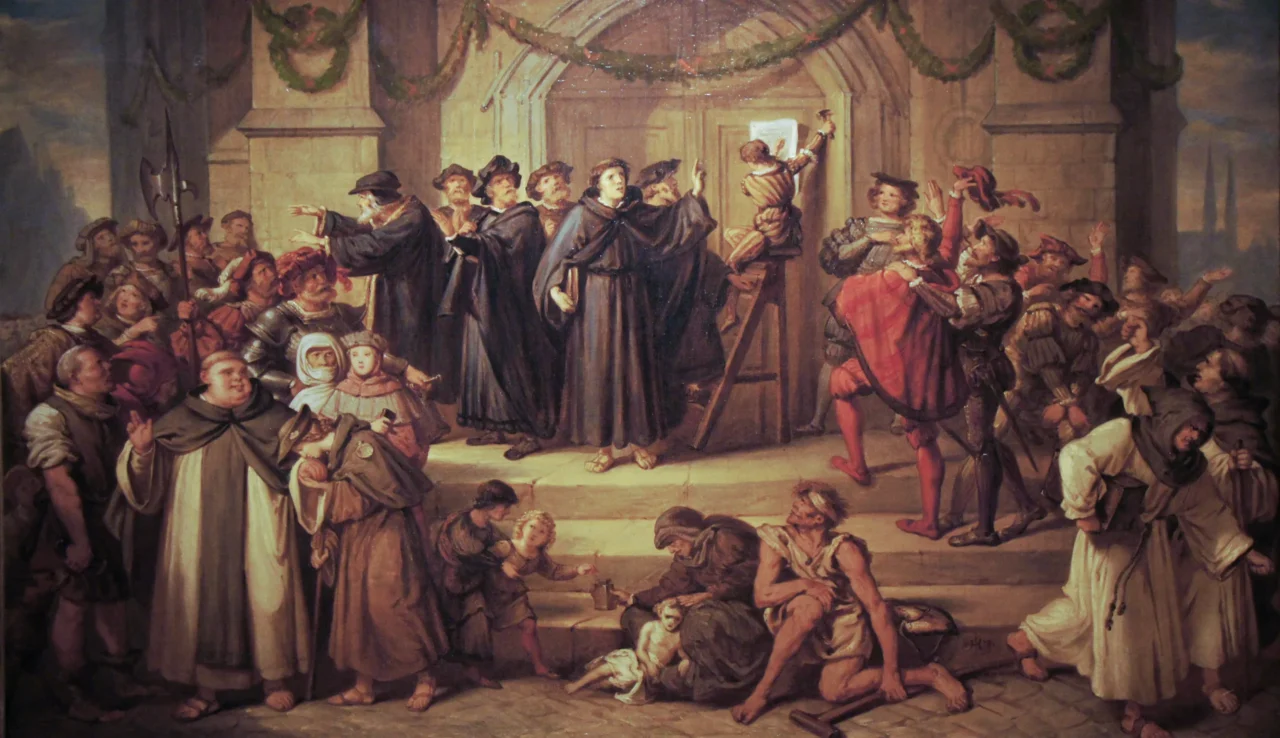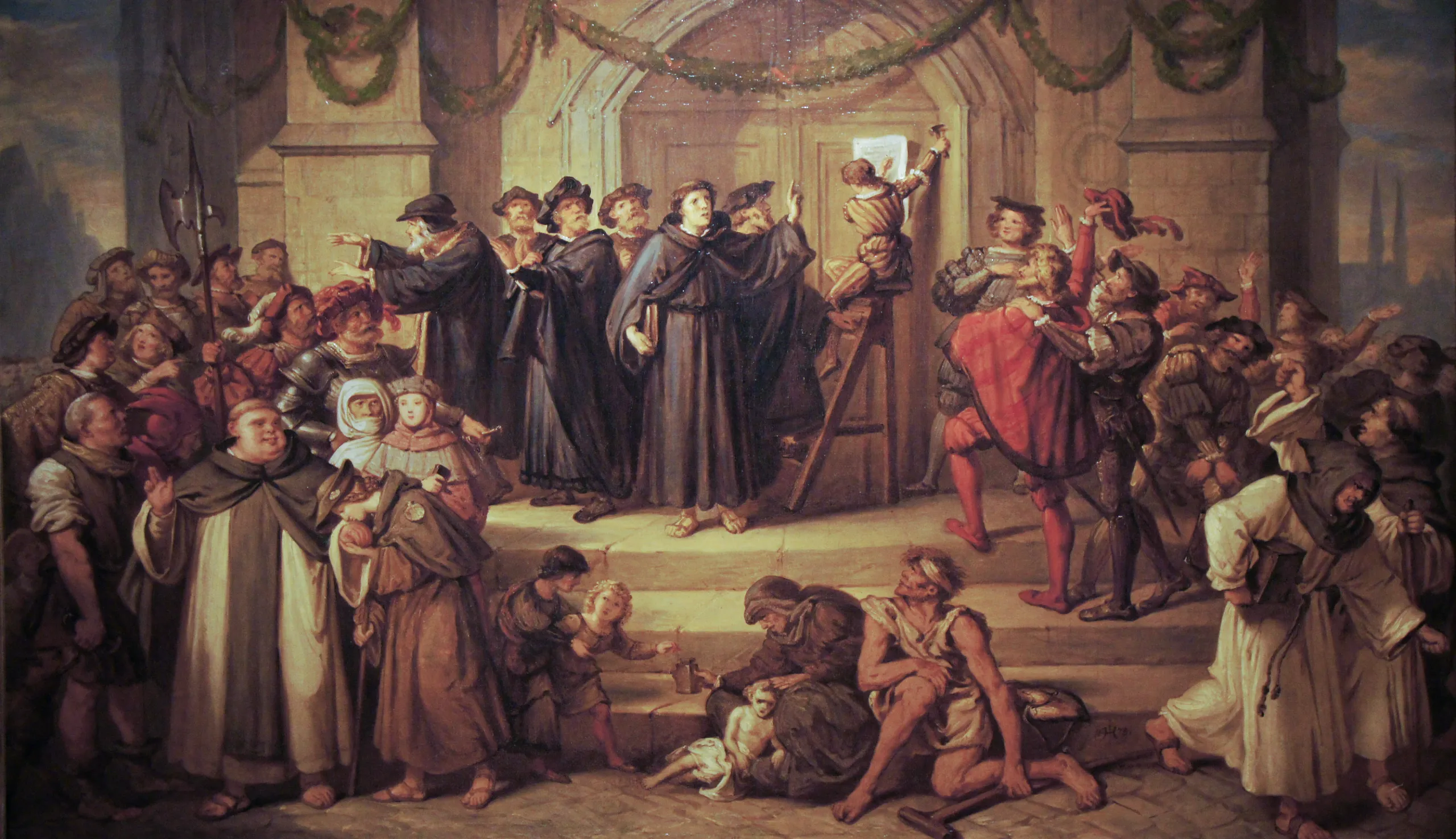

What Happens When One Man Stands for Truth?
How far would you go to stand up for what you believe is right?
In the Luther House in Wittenberg hangs a striking painting by Julius Hübner that captures a pivotal moment in Christian history. It shows Martin Luther marching boldly to the doors of the Castle Cathedral to nail his 95 theses—strong objections to the Church’s sale of indulgences and the assumed authority of the Pope.
At the center of the scene stands Luther himself, a Bible firmly tucked under his arm. To his left, a group of eager students watches with anticipation, their faces glowing with hope. To his right, a stern church scholar tries to quash this excitement, attempting to suppress the stirring change.
In the foreground, a rotund monk receives a reverent kiss on the hand—a symbol of misplaced worship toward church figures rather than God. Nearby, a mother, her child, and a crippled man remind us of the Church’s true mission: to serve the poor and vulnerable. Meanwhile, in the background, a monk flees clutching a money box, symbolizing corruption.
How did Luther come to hold such powerful convictions?
He began as a devout monk, committed to every rule and ritual. He once said, “If ever a monk could win heaven by monkery, I must have reached it.” But as he studied the Bible and compared it to the Church’s teachings, he grew deeply troubled—especially by the practice of selling indulgences. This flawed idea claimed people could pay money to reduce or remove punishment for their sins. A popular German rhyme of the time exposed the absurdity:
“Place your penny on the drum, the pearly gates open and in strolls Mum.”
For me, this painting is about more than just Luther and a wooden door.
It marks a turning point in Christian history—a powerful return to sola scriptura: the Bible and the Bible alone as the final authority.
As church pressure mounted, Luther stood firm and declared:
“I am bound by the Scriptures I have quoted, and my conscience is captive to the Word of God. I cannot and will not recant anything, since it is neither safe nor right to go against conscience. May God help me. Amen.”
So, how far would you go to stand for what you believe is right?
Luther’s courageous stand changed the course of history, not just for himself but for the entire Christian faith. It reminds us that true transformation often begins with one person willing to stand for truth, even when it’s difficult or unpopular. What might God be calling you to stand for today?
| Artist | Julius Hübner |
| Title | Martin Luther Nailing the 95 Theses |
| Production | 1878 |
| Material | Oil on panel |
| Dimensions | 125 x 73 cm |
| Exhibit Location | Lutherhaus Wittenberg |
| Accession Number | |
| Credit Line | |
| Image Credit | Wikimedia Commons |
 Discover life and faith through art — free email reflections from Dr. Neale Schofield, straight to your inbox.
Subscribe for free
Discover life and faith through art — free email reflections from Dr. Neale Schofield, straight to your inbox.
Subscribe for free
More from The Gallery



What Happens When One Man Stands for Truth?

What Happens When One Man Stands for Truth?



